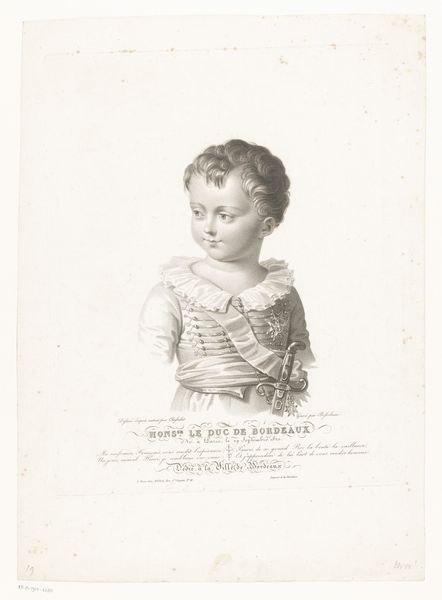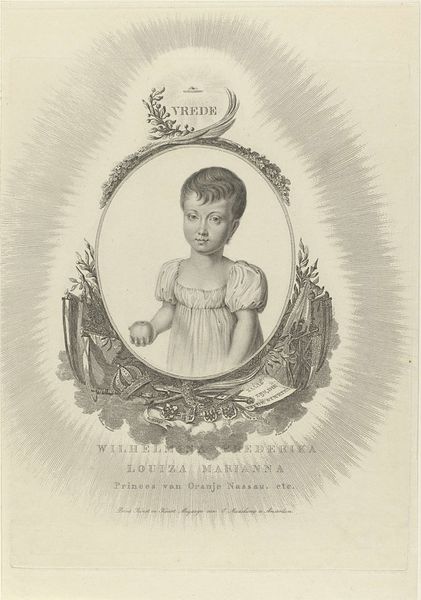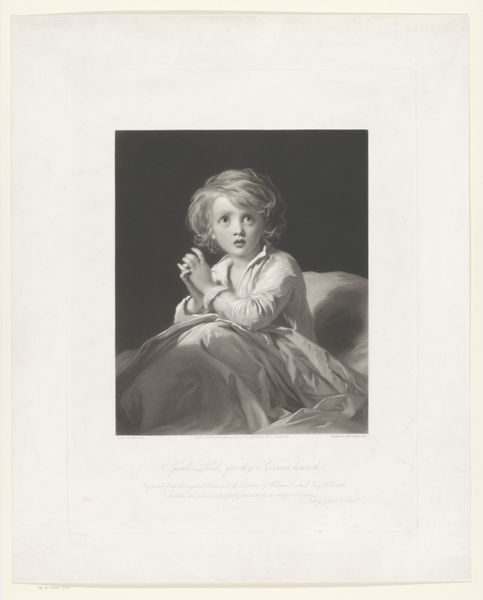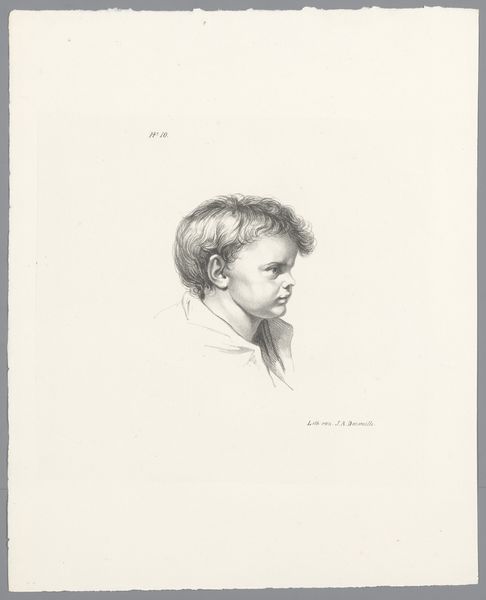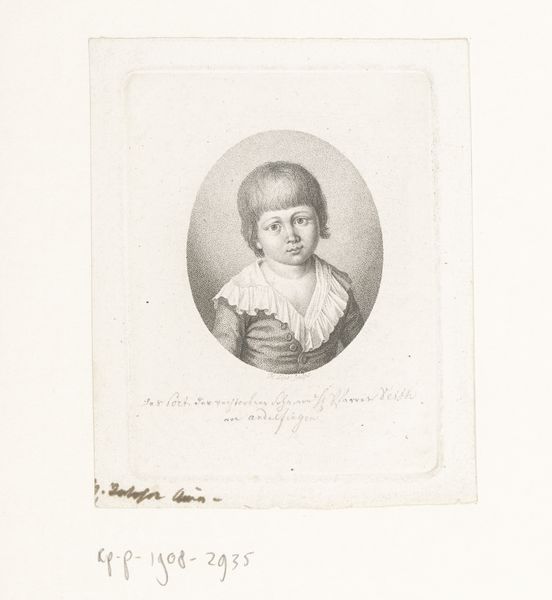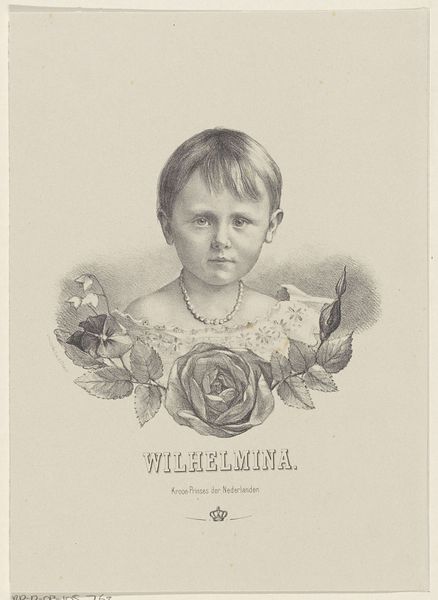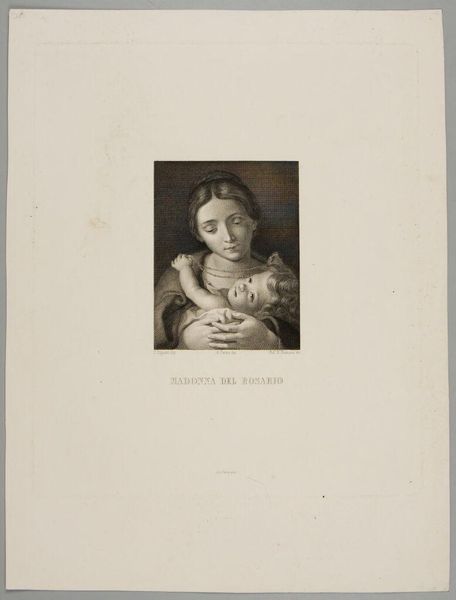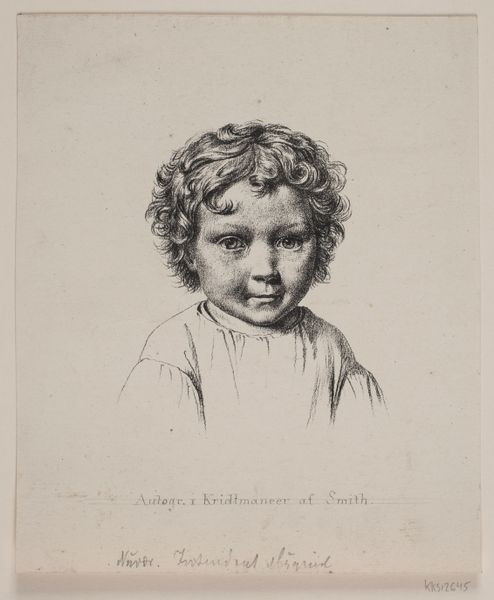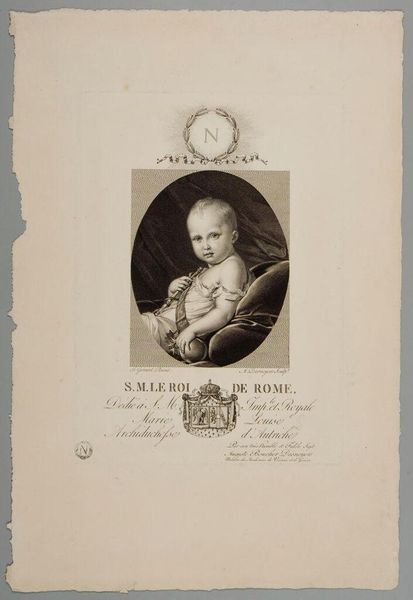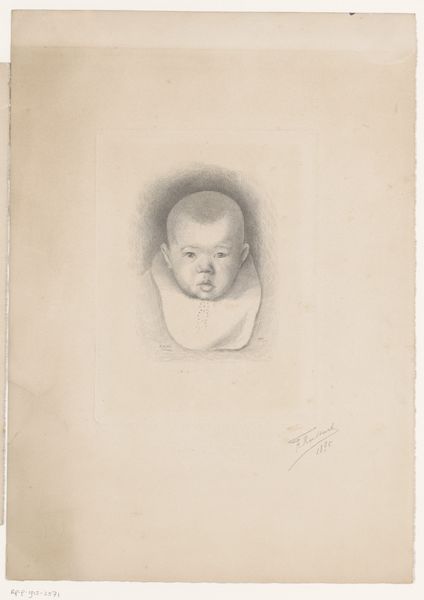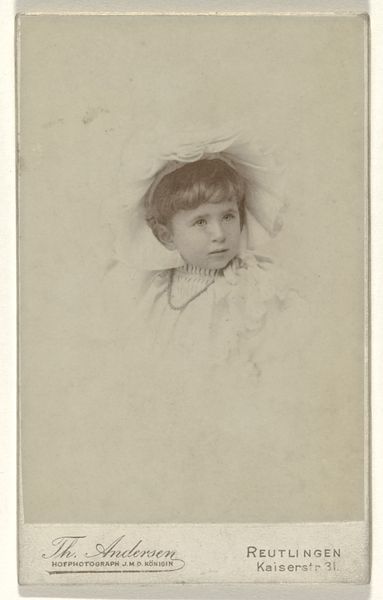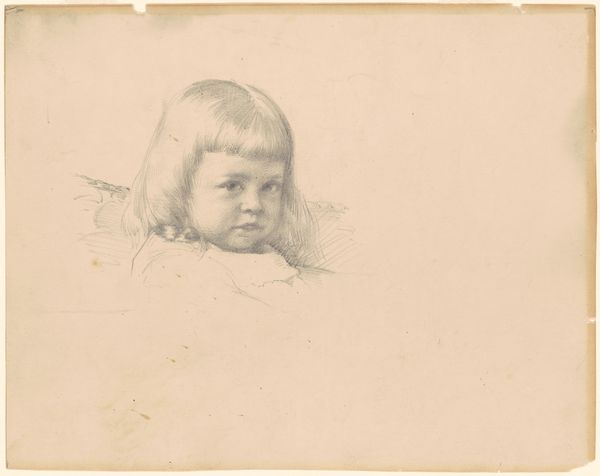
drawing, lithograph, print
#
portrait
#
drawing
#
dutch-golden-age
#
lithograph
# print
#
pencil drawing
#
realism
Dimensions: height 288 mm, width 245 mm
Copyright: Rijks Museum: Open Domain
Curator: What a delicate and intriguing image! We're looking at a lithograph from between 1815 and 1834. It’s entitled "Portret van Marianne, prinses der Nederlanden," a portrait of Princess Marianne of the Netherlands. Editor: My first thought is how unsettlingly adult her face seems for such a young child. It is almost haunting. Curator: Indeed. It is a formal, state-sanctioned depiction, one crafted to project dynastic stability, even onto its youngest members. Note how the soft lithographic technique renders her features with almost photographic realism. It moves away from overtly symbolic royal portraiture, appealing instead to notions of family and accessible representation. Editor: Yet there's that apple she holds. Apples, of course, are deeply symbolic – knowledge, temptation, original sin. It seems an odd choice to give such a loaded object to a young princess. Could it perhaps hint at the burdens or expectations placed on her from a young age? Curator: An interesting proposition! It’s also possible that it serves as a simple attribute of wealth and bounty, subtly reinforcing the family’s prosperity and their God-given right to rule. Or simply a token of innocence to balance the adult mien of her face. Either way, its presence in a lithograph, as opposed to a painted portrait, signals changing times. The rise of print media enabled images like this to reach a broader public, carefully shaping perceptions of the royal family. Editor: So, we are not just seeing a child but also a carefully crafted emblem? What do you think this lithograph tried to express? Curator: The portrait operates on multiple levels. It serves as a record, but also propaganda in the best sense: attempting to legitimize the role through domestic cuteness, portraying an accessible and enduring dynasty during a time of immense social change and democratized imagery. Editor: It is still amazing how the visual language transcends its explicit purpose. The innocence mixed with solemn symbolism will still resonate long after we forget who Princess Marianne was! Curator: It certainly is, a reminder that art always operates within—and helps shape—the currents of history.
Comments
No comments
Be the first to comment and join the conversation on the ultimate creative platform.
